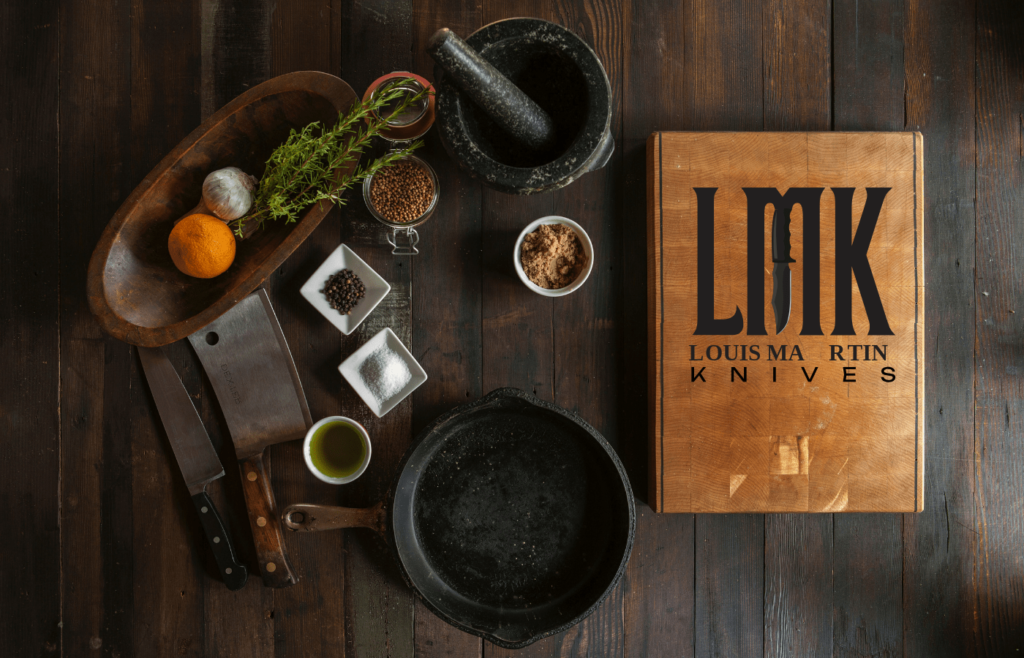Handmade knives are more than just tools; they are a blend of art, tradition, and innovation. Each piece tells a story of meticulous craftsmanship and personal touch. In a world increasingly dominated by mass production, the appeal of handmade knives lies in their uniqueness and superior quality. This article explores the rich history, the intricate craftsmanship, and the enduring allure of handmade knives.
A Historical Perspective
The history of knives is as ancient as human civilization itself. Early humans crafted rudimentary stone blades for survival, evolving over millennia into sophisticated tools and weapons made from metal. Handmade knives have always held significant cultural and practical value. In ancient Japan, the creation of samurai swords and knives, known as “katanas” and “hocho” respectively, became an art form. Similarly, the Middle Eastern tradition of forging Damascus steel knives, renowned for their unique patterns and strength, has been revered for centuries.
The Art of Knife Making
The process of making a handmade knife is intricate and labor-intensive. It starts with selecting the right material. High-carbon steel, stainless steel, and exotic alloys are common choices, each offering different qualities in terms of hardness, edge retention, and corrosion resistance.
The design phase is crucial. Craftsmen sketch their ideas, considering the knife’s intended use, balance, and aesthetic appeal. Custom orders often involve detailed consultations with clients to ensure the final product meets their specific needs.
Forging the Blade
Forging is the heart of the knife-making process. The selected metal is heated to a high temperature until it becomes malleable. Using a hammer and anvil, the craftsman shapes the blade, aligning the metal’s grain structure to enhance strength. This process requires not only physical effort but also a keen eye for detail and precision.
Heat Treatment
After forging, the blade undergoes heat treatment to optimize its hardness and toughness. This involves heating the blade to a specific temperature and then rapidly cooling it in oil or water. This quenching process hardens the steel, making it capable of holding a sharp edge. The blade is then tempered, a controlled reheating process, to reduce brittleness and achieve the desired balance between hardness and flexibility.
Shaping and Grinding
Once heat-treated, the blade is ground to its final shape. This step is critical as it determines the knife’s edge geometry and overall performance. Craftsmen use a variety of grinding techniques to create a sharp, precise edge. This process requires a steady hand and an expert understanding of blade dynamics.
Polishing and Finishing
Polishing the blade involves removing any imperfections and achieving a smooth, reflective surface. This step not only enhances the blade’s appearance but also its performance. A well-polished blade reduces friction, making cutting more efficient. Sharpening the blade to a razor edge is the final touch, often done using whetstones or advanced sharpening systems.
Crafting the Handle
The handle of a handmade knife is as important as the blade. It is crafted from materials like wood, bone, horn, or synthetic composites. The handle is shaped and fitted to the blade, then secured with pins or epoxy. The design and ergonomics of the handle are crucial for comfort and functionality. A well-designed handle provides a secure, comfortable grip, allowing for precise control during use.
The Appeal of Handmade Knives
Handmade knives are prized for their superior quality, uniqueness, and the personal connection they offer. Unlike mass-produced knives, each handmade knife is one-of-a-kind, reflecting the individual skill and creativity of its maker. This individuality appeals to collectors, chefs, and outdoor enthusiasts alike.
The superior quality of handmade knives is evident in their performance. Craftsmen meticulously select materials and fine-tune every detail, resulting in blades that are sharper, more durable, and better balanced. The artistic expression involved in creating each knife also adds to their allure. Craftsmen infuse their personal style and creativity into every piece, making each knife a work of art.
Cultural and Custom Value
Handmade knives often reflect the cultural heritage and traditions of their makers. Owning such a knife is like holding a piece of history, a tangible connection to the past and the artisans who keep these traditions alive. Many knife makers offer custom services, allowing customers to design a knife that perfectly suits their needs and preferences. This bespoke approach ensures that each knife is not only functional but also a personal statement.
The Modern Renaissance of Handmade Knives
Despite the rise of industrial manufacturing, there has been a resurgence of interest in handmade knives. This renaissance is driven by a growing appreciation for quality craftsmanship and the desire for unique, personalized products. Modern artisans blend traditional techniques with contemporary technology to push the boundaries of performance and design.
The internet has played a significant role in this revival. Online platforms and social media have created vibrant communities of knife enthusiasts, providing a space for craftsmen to showcase their work and connect with customers worldwide. This global reach has fostered greater appreciation and demand for handmade knives.
Conclusion
Handmade knives represent a unique fusion of art, tradition, and functionality. They are a testament to the skill and passion of the craftsmen who create them, embodying the rich history and cultural significance of knife-making. Whether used in the kitchen, on a hunting trip, or as a collector’s item, handmade knives are cherished for their quality, beauty, and the personal stories they tell. As we move forward, the allure of handmade knives will undoubtedly continue to captivate and inspire, preserving this timeless craft for generations to come.
Stay tuned for more news and updates on Infinite Insight Hub!



